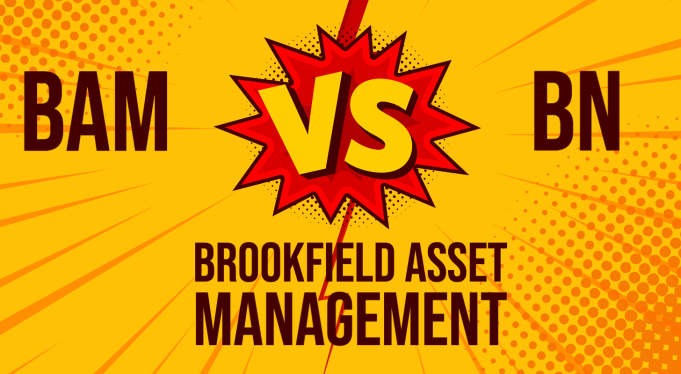Brookfield Asset Management (Previously BAM.a on TSX) spun off its asset management business in the last month of 2022. In this blog, we summarize the spin-off and what it may mean for you:
Brookfield Asset Management has changed its name to Brookfield Corporation and will now trade under the ticker BN. Brookfield Corporation will also issue shares of a newly created asset management business, called Brookfield Asset Management.
This should help:
Following the spin-off, current shareholders will own shares of the renamed Brookfield Corporation and receive shares of the asset management business (new BAM).
For every share of ‘old BAM’ or BAM.a owned, an investor will receive:
- One share of Brookfield Corporation (BN)
- 0.25 shares of the asset management business (new BAM)
Example: If an investor owned 100 shares of BAM.a, after the spin-off, the new ownership will look like this:
- 100 shares of Brookfield Corporation (BN)
- 25 shares of Brookfield Asset Management (BAM)
BN vs BAM
‘Old BAM’ or BAM.a was a global alternative asset manager with over $750 billion of assets under management across real estate, infrastructure, renewable power and transition, private equity, and credit. BAM.a owned and operated long-life assets and businesses and offered a range of alternative investment products to investors around the world – including public and private pension plans, foundations, sovereign wealth funds, and private investors.
Following the name change to Brookfield Corporation (BN), the company announced a public listing of a 25% interest in the company’s asset management business. BN would now operate as a holding company that owns stakes in different companies that are either private or public including BAM.A’s invested capital in:
- 75% in Brookfield Asset Management (BAM)
- 48% in Brookfield Renewable Partners L.P. (BEP)
- 27% in Brookfield Infrastructure Partners L.P. (BIP)
- 64% Brookfield Business Partners L.P. (BBU)
Additionally, BN, as a holding company, would now act as a direct investor in real asset projects by putting in its own equity capital alongside other limited partners. BAM, on the other hand, as an asset manager would collect management and performance fees.
Given the main difference, it can be seen that BN would continue focusing on growth, capital allocation, and investing in projects. BAM, on the other hand, as a cash flow generator will be suited more for income investors.
Going forward, management expects BN to compound intrinsic value per share at 15% on average across market cycles and focus on reinvestment. In our view, BN trades as a high-growth entity, while BAM trades as a slow-growth income stock.
Tax Info
According to tax information on Brookfield’s website, 88% of the original cost base of the old BAM.a share should be allocated to the BN share, with the remaining 12% allocated to the new BAM share.
https://bn.brookfield.com/stock-distributions/tax-information
We hope this simplifies questions about the spin-off and what to expect going forward.
All the best!







Comments
Login to post a comment.